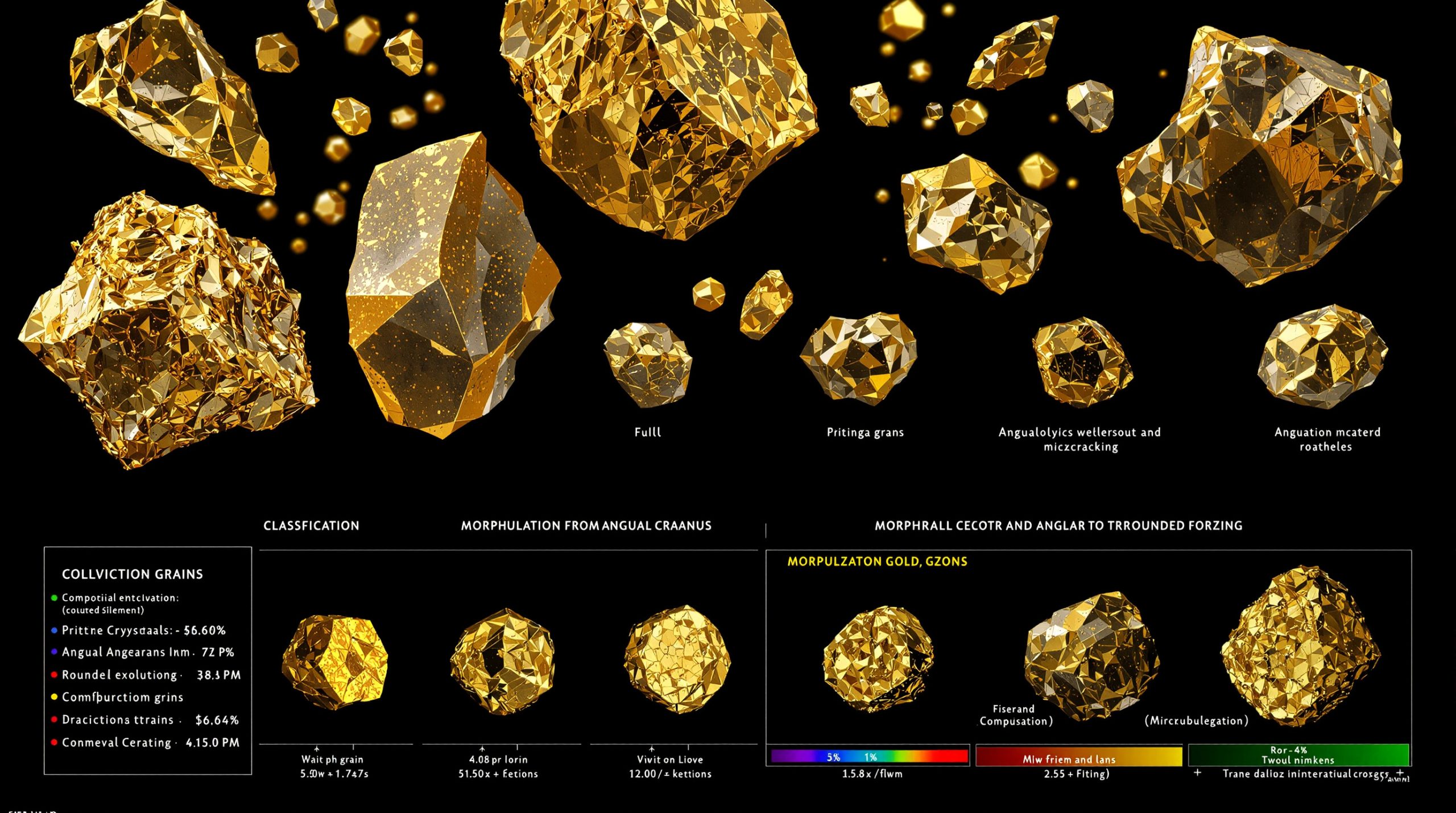What Caused the US Dollar to Fall?
The US dollar weakened significantly on global markets following a series of trade policy announcements and shifting monetary policy expectations. This decline has triggered ripple effects across commodity markets, particularly in the metals sector.
Trump's Tariff Announcements Shake Global Markets
Former President Trump recently announced substantial tariff increases ranging from 25% to 40% on imports from 14 countries, including major economies like Japan and South Korea. The implementation has been strategically delayed until August 1, creating a three-week window for potential trade policy negotiations that has injected uncertainty into global markets.
"Tariff wars and trade wars have no winners, and protectionism harms all parties' interests," stated Chinese Foreign Ministry Spokesperson Mao Ning in response to the announcements, reflecting widespread concern over escalating trade war impact.
Both Japan and South Korea have swiftly indicated they will seek negotiations to mitigate impacts, with Japanese Prime Minister Shigeru Ishiba emphasizing their intention to "continue negotiations with the U.S. to seek a mutually beneficial trade agreement."
Market analysts note that this three-week negotiation window creates significant uncertainty for currency traders, who must now price in multiple potential outcomes rather than a single definitive policy direction. The Trump tariff impact continues to reverberate through markets worldwide.
Federal Reserve Policy Expectations
Currency markets are also positioning ahead of the US Federal Reserve's latest policy meeting minutes, scheduled for release on Wednesday. These minutes are expected to provide crucial insights into the central bank's assessment of inflation trends and economic conditions.
Current market pricing reflects expectations for interest rate cuts totaling 50 basis points before year-end, with the first reduction anticipated to begin in October. This outlook stands in stark contrast to the Fed's earlier hawkish stance and has contributed significantly to the dollar's weakening position.
Several Fed officials are scheduled to speak this week, potentially providing further economic outlook clues that could either reinforce or challenge current market expectations. The timing of these speeches, coinciding with the tariff negotiation window, has heightened market sensitivity to official communications.
How Did Metal Markets Respond to the Dollar's Fall?
The relationship between currency values and commodity prices has once again proven significant, with most metals responding positively to the dollar's weakness. However, the response hasn't been uniform across all metal categories, revealing important distinctions in market dynamics.
Base Metals Performance Overview
The base metals complex showed a divergent performance pattern, with some metals surging while others retreated despite the favorable currency environment. According to Shanghai Metal Market data, LME zinc led gains with a 1.29% increase, demonstrating particular strength among industrial metals.
SHFE lead posted a solid gain of 0.93%, while notable exceptions included LME copper, which fell 1.67% despite typically benefiting from dollar weakness. Similarly, LME nickel dropped 1.07%, and SHFE nickel lost 0.78%, reflecting specific concerns about these metals' vulnerability to proposed tariffs.
Technical analysts point to key support levels being tested for copper, with the metal's decline breaking below its 50-day moving average—a bearish technical signal that has outweighed the supportive fundamental factor of dollar weakness. Investors looking for opportunities might consider various copper investment strategies to navigate this volatile market.
Aluminum and Related Markets
The aluminum sector displayed mixed performance with the primary aluminum price remaining relatively stable while related products showed more significant movement:
- Alumina main contract gained an impressive 1.86%
- Aluminum casting main contract rose a modest 0.33%
- Baled UBC (used beverage can) prices dropped by 100 yuan/MT
This divergence in the aluminum supply chain highlights how raw material inputs (alumina) and end-product scrap (UBC) can move differently from the primary metal, creating both challenges and opportunities for industry participants operating at different points in the value chain.
Ferrous Metals Collective Rise
Ferrous metals showed remarkable strength across the board, with the entire complex moving higher in unison:
- Iron ore increased 0.68%
- Coking coal rose a substantial 1.61%
- Coke increased 1.09%
These gains reflect strong underlying demand fundamentals in steel production, particularly in China where infrastructure development continues to drive consumption despite broader economic concerns. The coking coal performance is especially notable, as it outpaced other ferrous inputs, suggesting potential supply constraints or inventory drawdowns affecting this critical steelmaking component.
What's Happening with Precious Metals?
Precious metals exhibited an unexpected pattern of movement that contradicted their typical relationship with dollar weakness, highlighting the complex interplay of factors currently influencing financial markets.
Gold and Silver Performance
Despite the dollar's decline—which typically supports precious metals prices—COMEX gold fell 0.95% overnight, confounding many market participants who expected the opposite reaction. This anomalous movement suggests other factors are currently outweighing the currency effect.
COMEX silver gained a minimal 0.06%, showing slightly more resilience than gold but still underperforming relative to historical patterns during dollar weakness episodes. In the Chinese markets, SHFE gold declined 0.65% while SHFE silver dropped 0.1%, broadly mirroring the international trend.
The divergence between gold and silver's performance—with silver showing relative strength—indicates industrial demand may be providing additional support for silver, which has significant industrial applications beyond its monetary role. Looking forward, many analysts remain bullish on the gold price forecast for the remainder of 2025.
Factors Influencing Precious Metals
Several competing forces are currently influencing precious metals markets:
- Dollar weakness typically supports precious metals prices, but this relationship has temporarily broken down
- Trade tensions are creating market uncertainty that would normally boost safe-haven demand
- Rising interest rate cut expectations should theoretically support gold prices
- Technical selling pressure appears to be overwhelming fundamental factors in the short term
Market technicians note that gold has been testing key resistance levels around $2,450/oz, and the failure to break through has triggered profit-taking and technical selling despite supportive macroeconomic factors.
Upcoming economic data releases will be crucial for determining whether this anomalous price action represents a temporary deviation or a more significant shift in market dynamics for precious metals.
How Are Global Currencies Responding?
The ripple effects of dollar weakness and trade policy uncertainty have created significant movement across global currency markets, with certain currencies exhibiting particularly strong reactions.
Japanese Yen Under Pressure
The Japanese yen has weakened significantly after Trump's tariff announcements, with Japan being explicitly named among the targeted countries. The USD/JPY exchange rate rose by 0.38% to 146.625, indicating yen depreciation despite dollar weakness against other major currencies.
This paradoxical movement highlights Japan's particular vulnerability to U.S. trade policy changes, given its export-oriented economy and significant U.S. market exposure. Japanese Prime Minister Shigeru Ishiba's statement emphasizing continued negotiations reflects the urgency felt by Japanese policymakers to resolve the situation.
Currency analysts note that the yen's weakness comes despite Japan's improving economic indicators, suggesting trade policy concerns are currently overriding fundamental factors in currency valuations.
Australian Dollar Surges
The Australian dollar emerged as one of the strongest performers, rising over 1% following an unexpected decision by the Reserve Bank of Australia (RBA). Against market expectations for a rate cut, the RBA kept its cash rate unchanged at 3.85%, triggering a sharp appreciation in the Australian currency.
The AUD closed up 0.6% at $0.653, showing substantial strength against the backdrop of broader dollar weakness. The RBA indicated it's waiting for second-quarter price data before making further decisions, with inflation readings expected in late July that will provide crucial guidance for future policy.
This performance underscores how central bank policy divergence can amplify currency movements, particularly when decisions contradict market expectations.
European Currency Movements
European currencies demonstrated notable strength, with the euro-to-yen exchange rate hitting a one-year high, closing up 0.58% at 171.980. The euro to US dollar rate rose by a more modest 0.17% to $1.1729.
A source from the European Union indicated the EU might be exempted from the US's 10% benchmark tariff rate, providing additional support for the euro. This potential exemption highlights the complex geopolitical considerations influencing trade policy decisions and their subsequent impact on currency markets.
Currency strategists note that the euro's relative underperformance versus the Australian dollar reflects the different economic outlooks and monetary policy trajectories of the two regions, with Australia maintaining higher interest rates that attract yield-seeking capital.
What's Happening in Energy Markets?
Energy markets have shown resilience amid the broader financial market volatility, with oil prices moving higher despite complex cross-currents affecting supply and demand expectations.
Crude Oil Price Increases
US crude oil prices climbed 0.37% overnight while Brent crude oil rose a more substantial 0.65%, demonstrating the global benchmark's greater sensitivity to international trade developments and geopolitical factors.
According to Phil Flynn of Price Futures Group, "The decline in U.S. production outlook has driven up oil prices, and oil prices have also risen in tandem with other commodity prices amid news of copper tariffs and escalating tensions in the Red Sea."
This price action was primarily driven by the US Energy Information Administration's (EIA) downward revision of US oil production forecasts. The agency now projects 2025 US oil production at 13.37 million barrels per day, down from its previous estimate of 13.42 million barrels, suggesting tighter supply conditions than previously anticipated. These oil price movements continue to influence broader commodity markets.
Ongoing tensions in the Red Sea region continue to contribute to market concerns about potential supply disruptions, adding a geopolitical risk premium to crude prices that has persisted longer than many analysts initially expected.
US Oil Inventory Data
Fresh data from the American Petroleum Institute (API) showed US crude oil inventories rose by a substantial 7.13 million barrels, significantly exceeding market expectations and potentially limiting further price gains.
However, the inventory report wasn't uniformly bearish:
- Gasoline inventories fell by 2.18 million barrels
- Distillate inventories declined by 830,000 barrels
These product inventory draws suggest strong end-user demand despite the crude build, providing a counterbalance to the headline inventory figure. Market participants are now awaiting the official EIA weekly inventory report scheduled for release on Wednesday, which will either confirm or contradict the API figures.
Energy analysts note that seasonal factors typically result in crude inventory draws during summer months in the northern hemisphere, making this build particularly noteworthy and potentially indicative of softening demand or logistical constraints in the distribution system.
What Economic Data Should Investors Watch?
In a data-driven market environment, upcoming economic releases will play a crucial role in determining near-term price movements across currency and commodity markets, including metals.
Key Economic Indicators Coming Soon
Investors should pay close attention to several high-impact data releases in the coming days:
- China's June CPI and PPI year-on-year rates: These inflation measures will provide crucial insights into demand conditions in the world's largest metal consumer
- US May wholesale inventory month-on-month rate: An indicator of business confidence and supply chain conditions
- US July IPSOS Main Consumer Sentiment Index (PCSI): A measure of consumer confidence that affects discretionary spending and durable goods demand
- ANZ Consumer Confidence Index for Australia: Covering the week ending July 6, this will show whether the RBA's decision has impacted consumer sentiment
- Reserve Bank of New Zealand interest rate decision: Expected on July 9, this will influence Australasian currency pairs and regional commodity demand
Market analysts suggest particular attention to China's inflation data, as continued deflationary pressures could prompt additional stimulus measures that would support metal demand and prices.
China's Economic Development Briefing
The State Council Information Office is holding a high-profile press conference on "High-Quality Completion of the 14th Five-Year Plan," which could provide important policy signals for metal-intensive sectors.
NDRC Director Zheng Shanjie is scheduled to introduce economic and social development achievements at the briefing, which begins at 10:00 AM today. This presentation may include details on infrastructure development plans, industrial policy, and environmental initiatives—all of which have significant implications for metal markets.
Infrastructure analysts note that implementation details of China's economic plans typically have outsized impacts on industrial metals demand, particularly for steel, copper, and aluminum, making this briefing a potential market-moving event.
How Are Metal Production Projects Developing?
The supply side of the metals equation continues to evolve, with several significant project developments that will influence market balances in the coming years.
Copper Production Developments
Daoshi Technology has announced plans to invest up to $165 million in a 30,000-tonne per annum copper cathode hydrometallurgy smelter project. This investment highlights ongoing expansion in copper processing capacity despite current price volatility.
Meanwhile, Shengda Resources' Honglin Mining is preparing to commence trial production at its Caiyuanzi Copper-Gold Mine between July and September. The company has indicated that its profits will be primarily derived from non-ferrous metal mining and beneficiation operations at this site.
These projects are moving forward despite the current tariff uncertainty, reflecting producers' confidence in longer-term demand fundamentals for copper, particularly given its critical role in energy transition technologies and infrastructure development.
Lithium Market Concerns
In a significant market signal, major producer Ganfeng has indicated that current lithium prices may not be sustainable over the long term. The company noted that multiple lithium projects are facing cost support challenges in the current price environment.
This assessment from a leading industry participant suggests potential rationalization of lithium supply growth, which could eventually support prices despite current weakness. The lithium market has experienced extraordinary volatility in recent years, with prices surging to record highs before retreating substantially.
Mining analysts point out that lithium project economics vary dramatically based on deposit type, processing method, and location, creating a complex supply response curve as prices fluctuate. The current price environment appears to be testing the viability of higher-cost operations and greenfield developments.
China's metal production overview for June 2025 and the July forecast were recently released, providing additional context for supply conditions across the metals complex.
FAQ: US Dollar and Metals Markets
What is causing the current weakness in the US dollar?
The US dollar's decline is primarily driven by two key factors. First, Trump's announcement of significant tariff increases (25%-40%) on imports from 14 countries has created uncertainty in global trade relationships. This uncertainty typically weighs on the dollar as markets price in potential economic disruption.
Second, market expectations for Federal Reserve interest rate cuts later this year—currently anticipated at 50 basis points total with the first cut in October—are putting downward pressure on the dollar. When interest rate differentials between the US and other economies narrow, the dollar's yield advantage diminishes, reducing its attractiveness to investors.
Additionally, technical factors including positioning and momentum indicators suggest the dollar had become overbought in previous weeks, making it vulnerable to a correction when sentiment shifted.
Which metals are performing strongest in the current market?
LME zinc is leading gains with a 1.29% increase, demonstrating particular strength among base metals. In the aluminum complex, alumina is outperforming with a 1.86% rise. Within the ferrous sector, coking coal has shown impressive strength, rising 1.61%, followed by coke with a 1.09% increase.
These metals are benefiting from the weaker dollar and specific supply-demand dynamics in their respective markets. Zinc's outperformance may reflect tightening concentrate supply and declining treatment charges, while coking coal's strength indicates continued robust steel production despite broader economic concerns.
Interestingly, copper and nickel—often considered economic bellwethers—have underperformed, with LME copper falling 1.67% and LME nickel dropping 1.07%. This divergence from other industrial metals highlights market concerns about these metals' particular vulnerability to proposed tariffs.
How are trade tensions affecting global currency markets?
Trade tensions are creating significant volatility in currency markets, with impacts varying based on each country's exposure to U.S. tariff policies. The Japanese yen has weakened sharply following Trump's tariff announcements that specifically targeted Japan, with USD/JPY rising 0.38% to 146.625 despite broader dollar weakness.
Meanwhile, the euro has strengthened on indications that the EU might be exempted from US tariffs, with EUR/USD rising 0.17% to $1.1729. This divergence highlights how tariff policies are creating winners and losers in currency markets based on perceived vulnerability.
The Australian dollar surged after the Reserve Bank of Australia unexpectedly maintained interest rates at 3.85%, contradicting market expectations for a cut. This policy surprise, combined with Australia's relatively favorable position regarding U.S. trade tensions, propelled the AUD up over 1% before settling 0.6% higher at $0.653.
These diverse currency movements reflect the complex interplay between trade policy, monetary policy, an
Want to Capitalise on the Next Major Mineral Discovery?
Stay ahead of the market with Discovery Alert's proprietary Discovery IQ model that instantly identifies significant ASX mineral discoveries and translates complex data into actionable investment insights. Explore how historic discoveries have generated substantial returns by visiting Discovery Alert's dedicated discoveries page and begin your 30-day free trial today.




